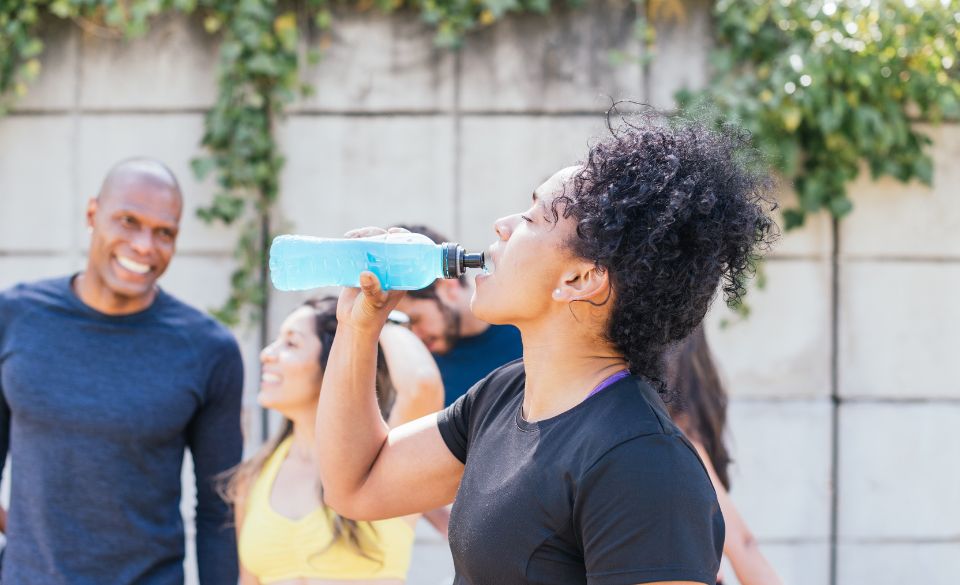
How To Cool Down After A Run: A Complete Guide
Page Contents
The significance of a post-run cool down, especially following a workout involving intense running such as intervals or tempo sessions, is a commonly discussed topic. However, why is it necessary, and what exactly does it achieve? Are you executing your cool down effectively?
The Purpose of a Cool Down
The fundamental purposes of a cool down are twofold: transitioning from exertion to recovery and initiating the recovery process.
Cool downs hold the most value following demanding workouts, such as tempo runs or interval sessions, or after lengthy runs. The higher the level of exertion, the more critical it becomes to gradually lower your heart rate and commence the recovery process.
While it’s true that a cool down helps expedite the removal of metabolic by-products like lactate, the practical implications of this are somewhat limited. The conventional belief that lactate accumulation leads to soreness is now considered outdated. Soreness predominantly arises from muscle damage, a factor that remains unchanged regardless of whether you engage in cool down activities. Additionally, a cool down doesn’t significantly enhance your performance in subsequent workouts. Regardless of whether you cool down or not, you may still need a recovery run or rest day following a strenuous workout or long run.
Nonetheless, there is an exception within a four-hour time frame between workouts. If you swiftly transition from one activity to another, such as moving from a triathlon’s brick workout to a strength session immediately after a run, an active cool down can enhance your performance in the subsequent session, as suggested by a 2018 systematic review published in Sports Medicine.
In essence, a cool down isn’t primarily about metabolite clearance but rather about shifting your body from a state of exertion and stress to one of rest and recovery.
Do You Need a Cool Down Jog?
The response is both yes and no.
Technically, you could conclude your run immediately after your final interval; lactate clearance will naturally occur over time. However, just because it’s feasible doesn’t necessarily make it advisable.
Research indicates that an active cool down contributes to a more rapid recovery of the cardiovascular and respiratory systems. Nevertheless, the primary reason is rooted in practicality and the athlete’s subjective experience.
While you can halt your run right after an interval, it might not feel comfortable. The abrupt drop in heart rate can lead to sensations of lightheadedness or dizziness. Blood flow is primarily directed towards working muscles during intense efforts, potentially causing feelings of nausea or muscle cramping. Additionally, you miss out on the mental relaxation that a light post-workout jog can provide, which is crucial given that strenuous exercise is inherently a stressor.
A cool down jog enables a gradual return to equilibrium. Your heart rate descends slowly, and your nervous system transitions more smoothly from a state of stress to one of rest. The relaxation achieved during a cool down run can enhance your overall well-being, even if muscle damage remains consistent.
The duration of a cool down jog can span anywhere from five to thirty minutes. Runners with lower mileage or novice runners are advised to opt for shorter cool downs, while those with higher weekly mileage typically require a longer cool down to accumulate necessary mileage. More experienced runners might even gain an additional aerobic benefit from running on fatigued legs.
Regardless of your experience level, the key to a successful cool down is maintaining a very light effort. Avoid attempting to hit specific paces; instead, focus on running with minimal strain, possibly just slightly faster than a shuffle. Elevated intensity during your cool down can introduce unwarranted fatigue and extend your recovery time, potentially hindering adaptation.
Lastly, pay attention to your body’s signals. The aim of a cool down isn’t to accumulate “junk miles” characterized by poor form. If your plan prescribes a two-mile cool down but you find yourself struggling and shuffling, it’s perfectly acceptable to conclude your run after a couple of minutes and then transition to a walk. A cool down should neither impose physical nor mental stress.
Effective Cool Down Techniques for Runners
A productive cool down doesn’t necessitate an extended duration. Even dedicating a mere five to ten minutes to easy running or walking can suffice for an effective cool down. This brief period helps lower your heart rate and signals your body to initiate the repair process. If post-workout nausea is a recurring issue for you, a cool down can mitigate it by gradually restoring your circulation to its normal state.
It’s important to avoid transitioning directly from an intense workout to a workday without an intermediary break. After a strenuous exercise session, cortisol levels need to decrease, and engaging in tasks that don’t promote relaxation can perpetuate elevated cortisol levels.
Elevate Your Legs
Find a comfortable indoor spot, replenish your fluids, put on some soothing music through your headphones, and elevate your legs against the wall. Simply relax without the distractions of checking emails or pondering your to-do list for a few minutes. Once you feel a sense of relaxation, proceed with your customary post-run recovery routine, involving eating and rehydrating.
The goal is to shift your stress response from a mode of breaking down, as experienced during a run, to one of building up. Even a brief relaxation period can reduce cortisol production post-workout and signal to the brain that the stress phase has concluded.
Stretch It Out
Incorporating stretching into your cool down routine can enhance flexibility and alleviate muscle tightness. After your run, engage in static stretching exercises, focusing on areas that feel particularly tight. Consider mobility exercises such as a downward dog with foot pedals for tight calves or ankles, t-spine rotations for upper back tightness, or a kneeling hip flexor stretch for tight hips. These stretches can offer relief and promote flexibility if you’re experiencing post-run tightness.
Walking
Following a lengthy or easy run, walking serves as an effective cool down technique. Additionally, you can extend your cool down duration after an intense workout by incorporating a walk. Walking gradually reduces both your heart rate and cortisol levels. Research suggests that spending time in nature can facilitate recovery, and a leisurely walk provides an opportunity to relish the outdoors while mentally unwinding.
Foam Rolling
Foam rolling can function as a practical cool down activity. Beyond the pleasant sensation, foam rolling sends signals to your brain, inducing muscle relaxation and diminishing your perception of soreness. Importantly, you don’t need to engage in foam rolling immediately after your run; it remains effective even when performed hours later.
While static stretching post-run doesn’t directly reduce the risk of injury, it can be beneficial if you’re experiencing tightness. Consider incorporating mobility exercises such as a downward dog with foot pedals for tight calves or ankles, t-spine rotations for upper back tightness, or a kneeling hip flexor stretch for tight hips. These exercises can offer relief if you’re feeling particularly tight.
Effective Post-Race Cooling Down
The approach to recovery after a race differs significantly from that after a strenuous workout. While workouts involve gradual exertion, races demand maximum effort. Unless the race is part of a longer run, it’s advisable to take it easy post-race. (If the race is integrated into a more extensive run as per your training plan, proceed with the prescribed mileage – a well-structured training plan will strategically incorporate these segments to achieve specific aerobic goals.) If you’ve just completed your season’s key race, take a few minutes to walk around, encouraging the restoration of blood flow to a state of equilibrium, replenish your energy with food and fluids, and allow yourself to relax.
Final Words – How To Cool Down After A Run
Understanding the significance of a cool down and implementing it effectively, especially after demanding running sessions, is pivotal for runners. While the practical benefits of a cool down are not solely about metabolite clearance or immediate performance enhancement, they play a crucial role in transitioning your body from a state of exertion to one of recovery.
Cooling down is about embracing the restorative phase of your workout, promoting relaxation, and signaling to your body that the stress of exercise has come to an end. Whether it’s through a gentle jog, stretching, elevating your legs, or a leisurely walk, each element of your cool down contributes to your overall well-being and post-exercise recovery.
So, as you lace up your running shoes and hit the pavement, remember that an effective cool down is your bridge from exertion to rejuvenation, helping you become a more resilient and accomplished runner.




